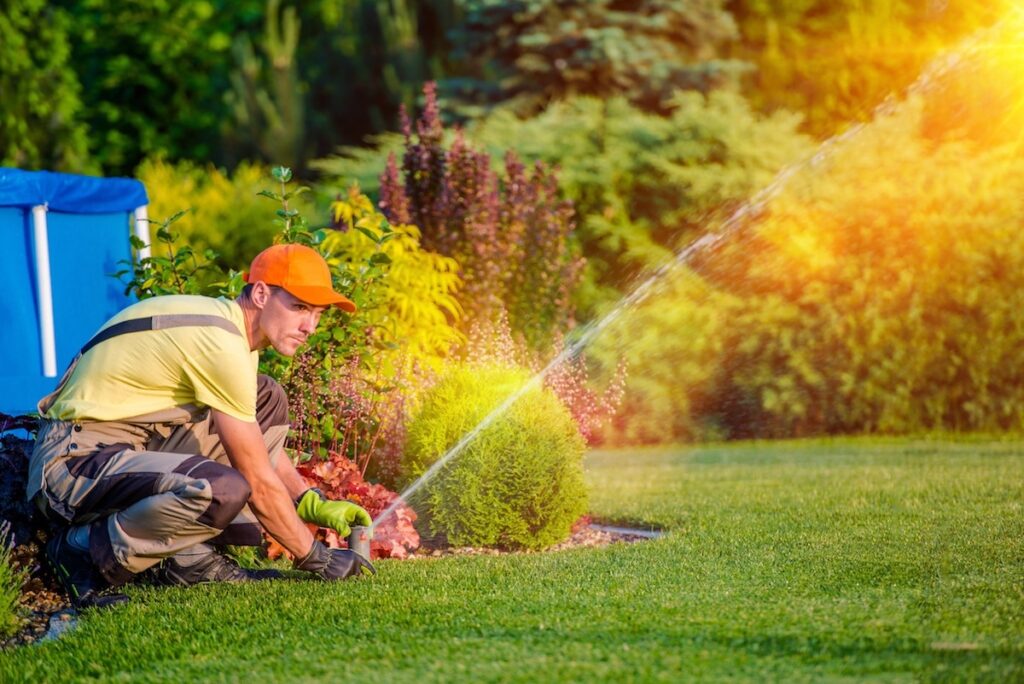A healthy, green lawn doesn’t happen by accident—it’s the result of careful planning and smart irrigation design. Yet many homeowners and even some landscapers make avoidable mistakes that lead to wasted water, uneven growth, or costly repairs. Whether you’re setting up a new system or improving an old one, understanding these common pitfalls can save you time, money, and frustration. With an advanced lawn irrigation design tool, you can easily avoid these issues and create an efficient system that keeps your lawn thriving.
Uneven Sprinkler Spacing
One of the most common mistakes in irrigation design is placing sprinklers too far apart or too close together. Uneven spacing creates “dry spots” and “wet zones,” where some parts of your lawn are parched while others are overwatered. Sprinklers should have what’s called head-to-head coverage, meaning each sprinkler’s spray reaches the next one. This ensures uniform water distribution and prevents brown patches.
An irrigation design tool automatically calculates optimal spacing based on your water pressure, nozzle type, and lawn size. Instead of guessing, you’ll know exactly where to place each head for even, balanced coverage.
Ignoring Water Pressure and Flow Rates
Designing a system without checking water pressure and flow is like building a house without measuring the foundation. Too high of pressure can damage sprinkler heads and cause misting, while too low of pressure results in poor coverage. Many homeowners also make the mistake of adding too many sprinkler heads to one zone, overloading the system.
A reliable design tool can simulate your home’s water source and ensure your zones are properly balanced. It calculates how many heads your system can handle and suggests adjustments to maintain consistent performance across your lawn.
Poor Zoning and Plant Grouping
Every part of your yard doesn’t need the same amount of water. Shady areas, sunny spots, and garden beds all have different requirements. A major mistake is not separating your irrigation system into proper zones. For instance, shrubs and flower beds often need less frequent watering than grassy areas.
By using a digital design platform, you can easily group plants by water needs and assign custom schedules. This not only saves water but also keeps your landscape healthier by avoiding over- or under-watering sensitive plants.
Overlooking Slope and Drainage
Water naturally flows downhill, and if your irrigation design doesn’t account for slope or drainage, you may end up with puddles in low areas and runoff on inclines. Over time, this can cause erosion and nutrient loss in your soil.
Modern irrigation planning tools allow you to input elevation data, helping you visualize how water will move across your property. This helps you strategically place sprinklers, choose proper nozzles, and design zones that compensate for uneven terrain.
Neglecting Wind and Sun Exposure
Another overlooked factor is wind direction and sunlight. Sprinklers that spray into the wind lose water to evaporation and drift, while sprinklers placed in full sun may need slightly longer watering times.
A smart design system takes local climate data into account. It helps determine the best spray patterns and positioning to reduce water waste. By using technology that models these conditions, you can achieve much higher efficiency than manual planning allows.
Forgetting Maintenance Access and Expansion
Designers sometimes get so focused on the immediate layout that they forget future maintenance and upgrades. Placing valves or lines in hard-to-reach spots can make repairs difficult and expensive later on. Similarly, not planning for expansion—such as adding new garden beds or turf areas—can force you to redesign your system entirely.
An irrigation design tool allows you to visualize the full network of pipes, valves, and zones, so you can leave access points and plan for potential add-ons without guesswork.
Failing to Use a Design Tool Altogether
Perhaps the biggest mistake is assuming you can “eyeball” your irrigation layout. Manual designs often overlook crucial factors like pressure loss, head overlap, and elevation changes. That’s why using an irrigation design tool isn’t just convenient—it’s essential. These platforms provide step-by-step guidance, offer automatic calculations, and even generate material lists so you know exactly what to buy. The result? A well-balanced, efficient system that delivers the right amount of water to every corner of your lawn.
Plan Smart, Water Smarter
Designing a lawn irrigation system may seem straightforward, but small missteps can have big consequences over time. Uneven watering, wasted water, and poor coverage often come down to preventable design errors. By using an irrigation design tool, you can eliminate guesswork, optimize performance, and ensure your lawn gets consistent, efficient watering year-round. Whether you’re a DIY homeowner or a professional landscaper, investing time in proper design is the key to a healthy, vibrant landscape that lasts.
